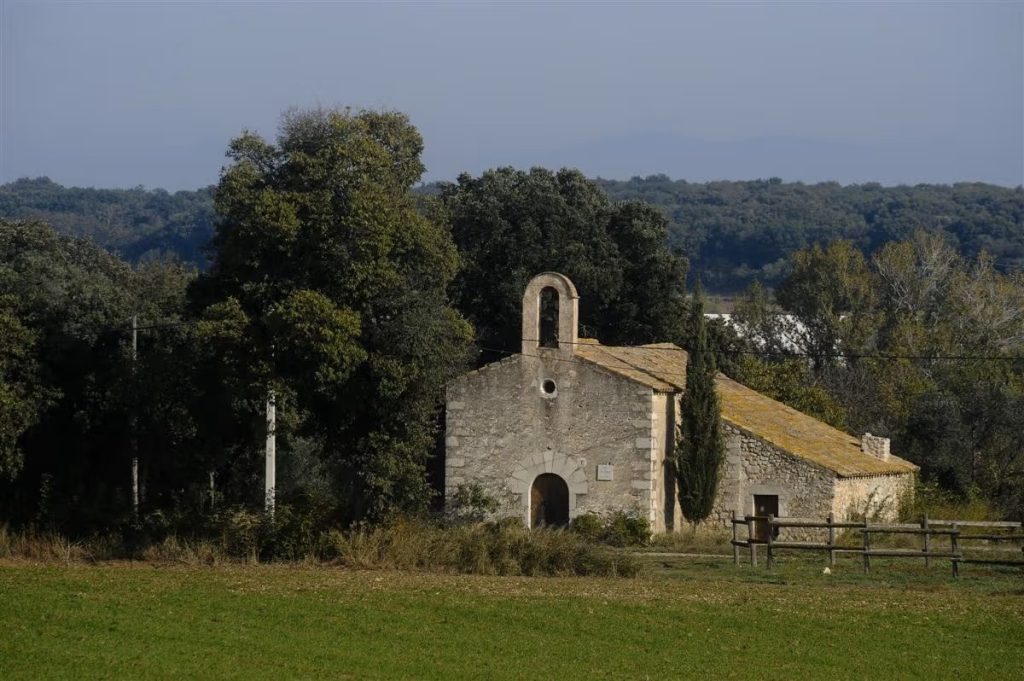
The hermitage of Santa Eugènia is a small church with a nave and a semicircular apse, of Romanesque origin, probably from the 11th century, modified in the 17th century. On the western facade, there is a small semi-circular arched door made of voussoirs with the engraved date 1852. The first known record is from the year 1338 during a pastoral visit, and it is explained that the church had no income and the bishop was informed that the possessions had been taken over by the Hospitallers of the Avinyonet commandery. The cult continued, and the furnishings increased in the 18th century. In 1734, there is a record of an altarpiece with scenes of the life and martyrdom of Saint Eugènia, which disappeared in 1936. The church was very abandoned, and the Patronat Santa Eugènia promoted its restoration in the 1970s.
The Hermitage of Santa Eugènia is a small church with a nave and a semicircular apse, of Romanesque origin, probably from the 11th century, modified in the 17th century. On the western façade, there is a small door with a semicircular arch made of voussoirs, which is incised with the date 1852. The first known record dates back to 1338 during a pastoral visit, where it is mentioned that the church had no income, and the bishop was informed that the possessions had been taken over by the Hospitallers of the Avinyonet commandery. The worship continued, and the furnishings increased in the 18th century. In 1734, there is a record of the existence of an altarpiece depicting scenes from the life and martyrdom of Santa Eugènia, which was lost in 1936. The church had fallen into disrepair, and the Patronat Santa Eugènia promoted its restoration in the 1970s.
Location
-
Camí D'avinyonet De Puigventós A Borrassà, 17742 Avinyonet de Puigventós, Girona, Spain


Add a review